smartwatches
Latest
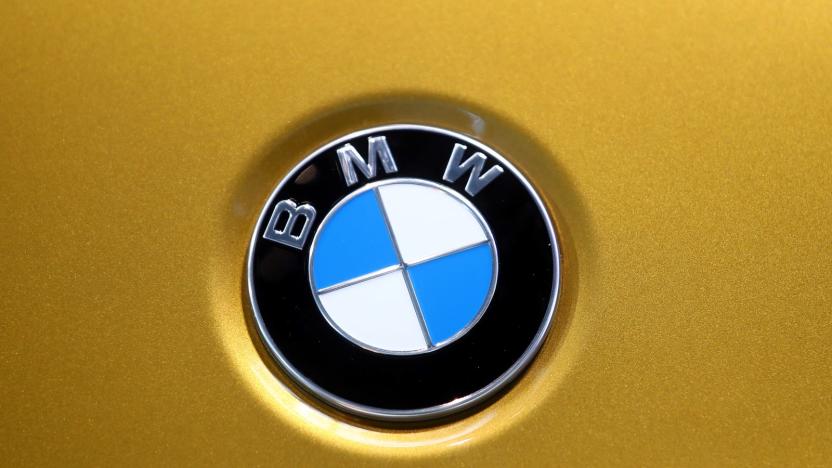
Fossil will sell BMW-branded smartwatches next year
BMW is moving into the smartwatch game, but it's not actually making the devices itself. Instead, Fossil has struck a five-year deal to create BMW-branded watches and smartwatches, as part of its seemingly never-ending quest to offer a smartwatch for everyone's taste.
Kris Holt07.30.2018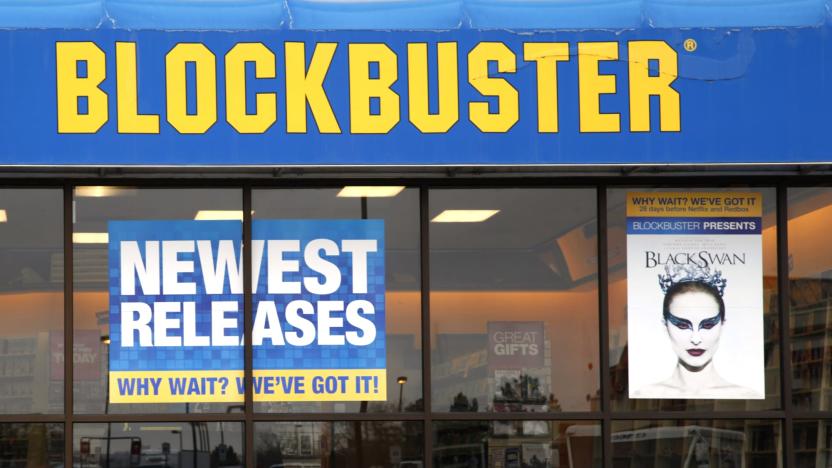
This day in Engadget history: Blockbuster Video tanks in a big way
Engadget has been around for 14 years and counting, which means our archives contain a veritable treasure trove of technology history. From notable reviews and news to the more mundane or ridiculous finds from across the internet, there's a lot to explore here. "This Day in Engadget History" will take you on a historical voyage as we look at what made the headlines in years past. Join us, won't you?
Swapna Krishna07.03.2018
Qualcomm launches a new chip for kid-friendly wearables
Qualcomm has finally launched a new smartwatch chip over two years after its last one, but it was created with a specific market in mind: kids. The chipmaker's new SoC, called the Snapdragon Wear 2500, has a 4G LTE modem, as well as an integrated sensor hub and can extend a watch's battery life better than its previous platform can. Wondering why Qualcomm has to create a chip specifically for children's smartwatches? Its wearables SVP Anthony Murray said it's because the growth in the "designed-for-kids but highly capable devices" segment "is very exciting." Apparently, the company is seeing "widespread global demand" for them. The chipmaker hasn't forgotten us adults, though -- according to The Verge, this is just one of two (or more) smartwatch chips it's launching this year.
Mariella Moon06.27.2018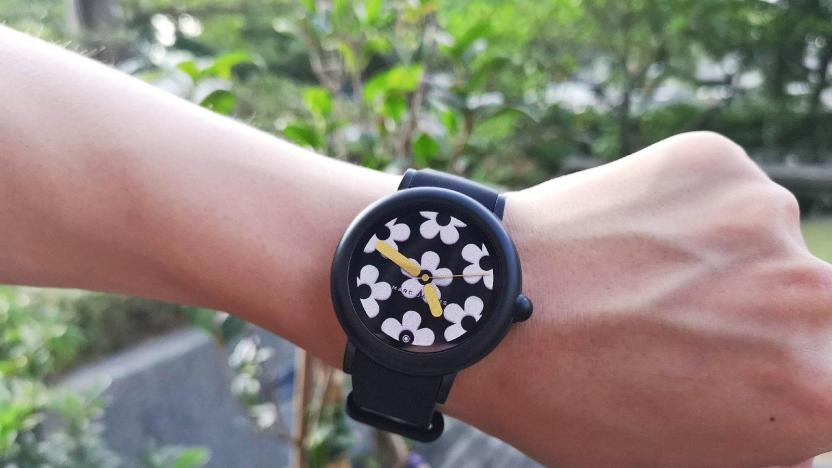
Marc Jacobs is (un)fashionably late with its first touchscreen watch
At this point in the smartwatch game, it's hard to get excited about yet another Android Wear -- sorry, Wear OS -- device. But that's not stopping Marc Jacobs from showing up fashionably late to the party. The designer's new Riley smartwatch ($295) is its first with a touchscreen display and runs Wear OS. It has a somewhat chunky round case with one button instead of the three that adorned the side of its hybrid sibling released last year, which was based on the company's existing Riley analog timepiece.
Cherlynn Low06.04.2018
AsteroidOS is an open alternative to Wear OS you can install today
When AsteroidOS first started working on a Linux-based smartwatch platform back in 2015, the device category was still fairly new. Now, the first stable version of the OS is finally available for download, providing an Android-compatible alternative to Wear OS. It can display smartphone notifications, weather data, calendar entries, alarms and timers, as well as music playback controls. To encourage developers and those who love tinkering with their devices to create custom applications and watchfaces for the platform, AsteroidOS also released a Software Development Kit along with tutorials.
Mariella Moon05.17.2018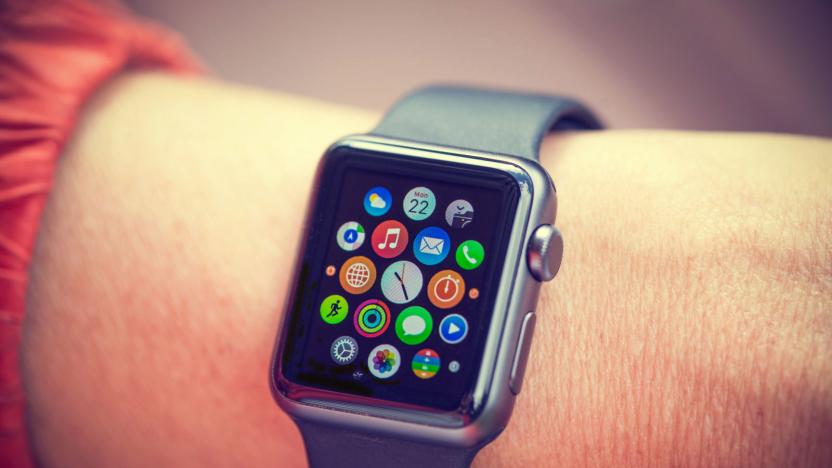
So you bought a smartwatch. Now what?
Now that smartwatches are actually useful enough for the general populace, setting them up isn't as pedestrian a task as pairing with your phone and calling it a day. On the surface, customizing your new device may not seem like a complicated task, but people often overlook some of the tools that can potentially make wearables more helpful. From recommended settings to the apps worth downloading, here's a walkthrough of what you should look out for when setting up your new wearable.
Cherlynn Low02.06.2018
How to buy a smartwatch in 2018
The smartwatch industry's identity crisis may be coming to an end. Familiar tech brands like Motorola, Microsoft and Pebble have retired from making wearables, while others like ASUS are rumored to be giving up on the category, leaving us with a shrinking selection of devices to choose from. But fitness and fashion brands have rushed to fill the vacuum, while more specialized watches are also on the rise. This means shoppers will need to prioritize some features over others. As it turns out, there's not yet a perfect solution.
Cherlynn Low01.25.2018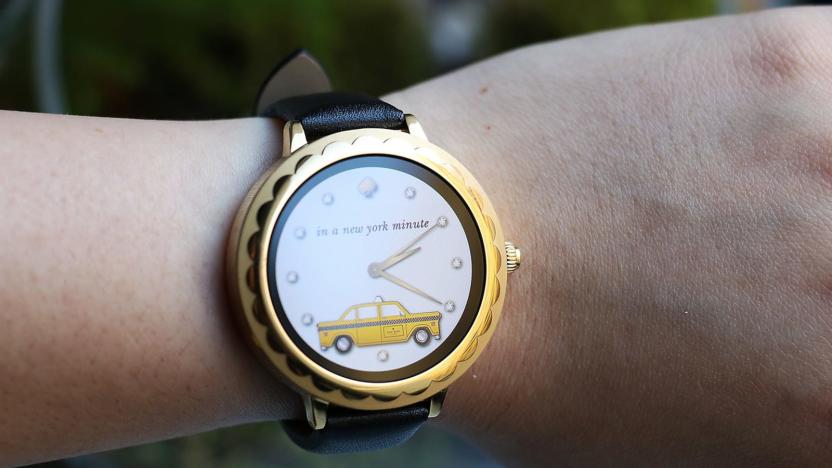
Kate Spade designed an Android Wear smartwatch
Kate Spade, known for its colorful, bubble-gum aesthetic that draws girls from all over the world to its purses and accessories, has made its first touchscreen smartwatch. The Android Wear device was unveiled at CES 2018, and it doesn't have a name other than "Kate Spade scallop touchscreen." It was designed to fit in with the rest of the brand's "unapologetically feminine" look, according to CEO Mary Beech, and it's one of the few smartwatches ever to specifically target women's wrists, and do so in an attractive way.
Cherlynn Low01.09.2018
24 hours with Fitbit’s first smartwatch
The holiday season is almost upon us, but as you fantasize about the mouthwatering delicacies you're going to put in your bellies, some of you may already be getting ready to shed a few pounds. A new and improved crop of fitness-centric smartwatches will be arriving soon to make staying in shape easier, and the Fitbit Ionic may be one to consider. It's the company's first full-fledged smartwatch, and the device packs a slew of new features designed to help people follow through on their workout plans. Well, that's the promise, anyway. As the Ionic's October arrival approaches, the company has pushed out software updates to early reviewers, but the device still feels unfinished.
Cherlynn Low09.19.2017
Fitness wearables will live or die by their apps
This week at IFA, some of the biggest players in wearables launched their latest smartwatches. From Fitbit's debut Ionic to Samsung's Gear Sport, these fitness-focused watches also run the companies' own proprietary platforms, each offering their own app selection. For them to succeed, Samsung, Fitbit and Garmin, which also unveiled a new watch at the show, must now race to stock their stores with the best apps. That's good news for smartwatches in general, because the influx of wearable apps could do for smartwatches what it did for smartphones years ago.
Cherlynn Low09.04.2017
Samsung Gear Sport hands-on: Promising but incomplete
Samsung may have just unveiled the Galaxy Note 8, but it's not finished with new devices yet. Here at IFA 2017, the company unveiled a trio of wearables with a deeper focus on fitness: the Gear Sport smartwatch, Gear Fit 2 Pro fitness band and the Gear IconX 2018 wireless earbuds. The Gear Sport in particular stands out as a sleeker, more-health-centric version of the Gear S3. The Sport borrows its overall aesthetic from the S3 but has some key differences, including an assortment of new features that are reminiscent of Fitbit's recently launched smartwatch. Samsung hasn't shared how much the Sport will cost yet, but we know it will range between $200 and $350 when it arrives for this year's holiday season.
Cherlynn Low08.30.2017
Fitbit Ionic smartwatch hands-on: A surprisingly well-rounded debut
After a series of reported delays and developmental challenges, Fitbit is finally ready to unveil its first smartwatch. The timing is appropriate, given that this is the tenth anniversary of the company's first tracker. The Ionic is Fitbit's most modern device to date, featuring a colorful LCD touchscreen and advanced sensors. It also serves as the launchpad for some new Fitbit services, like a fully fledged operating system called FitbitOS, contactless payment and a subscription-based custom workout guide called Fitbit Coach. The company needs the Fitbit Ionic to be successful -- its sales have slowed in recent months, and it faces a lawsuit over its use of haptic feedback. Judging from the few days I've had an early version of the Ionic, it appears to have the potential to resuscitate Fitbit's waning business.
Cherlynn Low08.28.2017
Smartwatches are relying on fashion brands to survive
The 2017 lineup of Android Wear watches is a techy fashionista's dream come true. With options from an ever-growing list of designers including Louis Vuitton, Movado, Michael Kors, Emporio Armani, Tommy Hilfiger, Google's smartwatch platform is impressively diverse. Fossil Group even announced it would offer 300 new smartwatch designs by year's end, with many of those models running Android Wear. Meanwhile, big tech brands like Motorola and Microsoft have stopped making wearables altogether. The fashion industry's enthusiasm is a lifeline for smartwatches as tech companies start deserting them.
Cherlynn Low08.04.2017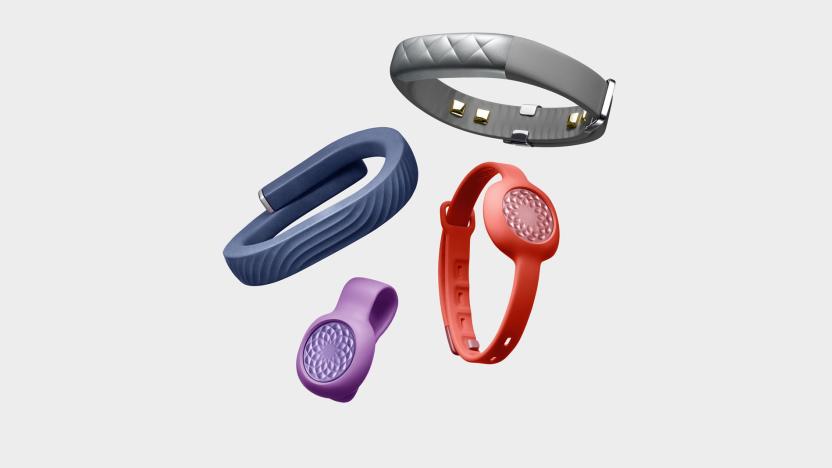
Jawbone’s demise heralds the end of the wearables industry
Sometimes deaths are sudden, but most company deaths are the opposite, with Jawbone's protracted terminus taking upward of a year. The company was an early pioneer in the consumer-wearables market and had raised close to a billion dollars in investment, but that wasn't enough to save it. Its end doesn't just mean the demise for one company, but signals the end of the great generation of wearables.
Daniel Cooper07.07.2017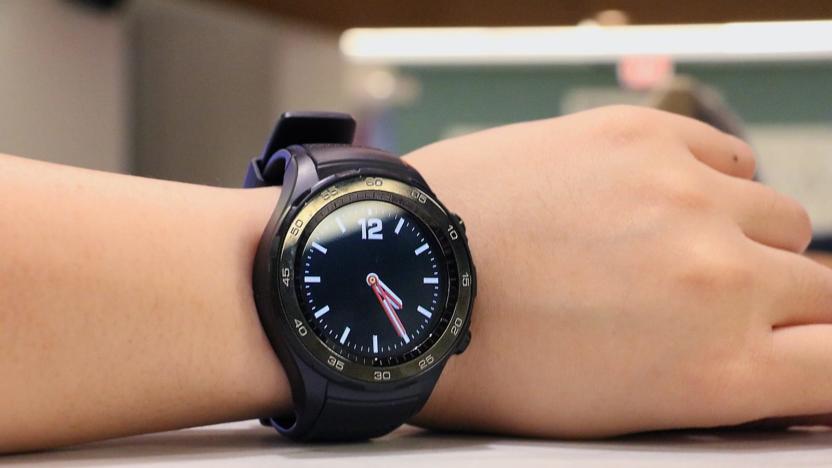
Huawei's Watch 2 can last for weeks without its smarts
I'm a firm believer in the usefulness of smartwatches, but even I can't deny that the product category is struggling. Despite Apple joining the fray with its first Watch two years ago, wearables still haven't taken off with mainstream consumers. Google's latest update to its wrist-based OS just started trickling out to the public, and it brings new features that make smartwatches more functional. Even then, there are problems with these devices' battery life and design. It is in such a challenging time that we are introduced to Huawei's Watch 2. It's the company's new Android Wear 2.0 device, and it already faces competition from LG, ZTE, Fossil and Tag Heuer. Fortunately for Huawei, the Watch 2 stands out thanks to its impressively long-lasting battery, comfortable design and reasonable price.
Cherlynn Low05.19.2017
Fossil hopes you’ll like one of its 300 smartwatches
Back in March, Fossil revealed its plans to introduce 300 smartwatches in 2017, including a mix of hybrid analogs and others running Android Wear 2.0. The new wearables come from Fossil itself as well as brands like Misfit, Diesel, Emporio Armani and Skagen, all of which are owned by parent company Fossil Group. The firm says the idea here is to offer consumers more choices, since not everyone likes the same style of watch. Pictured above, for one, is Skagen's Hagen Connected Steel-Mesh, a $220 hybrid smartwatch with a traditional design and features such as activity tracking, sleep monitoring and support for phone notifications.
Edgar Alvarez05.11.2017
Fitbit's upcoming smartwatch and wireless headphones leak out
We've heard that Fitbit was having trouble developing its upcoming smartwatch, but based on a batch of leaked photos obtained by Yahoo Finance, it looks like the company is making progress. Codenamed "Project Higgs," it's Fitbit's first "proper" smartwatch; last year's Blaze was basically just a fitness tracker that looked like a watch. In many ways, the new product looks like a refined version of the Blaze. It swaps out the clunky octagonal design for a more traditional square face, and it features a metal unibody case, which adds some colorful accents around the screen.
Devindra Hardawar05.01.2017
ZTE's first Android Wear watch is also one of the cheapest
Android Wear 2.0's release has been delayed multiple times, and aside from a few watches that have just hit the market, there aren't many affordable ways to get Google's latest wearable OS right now. The good news is, a new option arrives in about two weeks via ZTE, which is making its first-ever Android Wear watch. It's called the Quartz, and it will be available on April 21 via T-Mobile for just $200. You can also get it online starting April 14th.
Cherlynn Low04.10.2017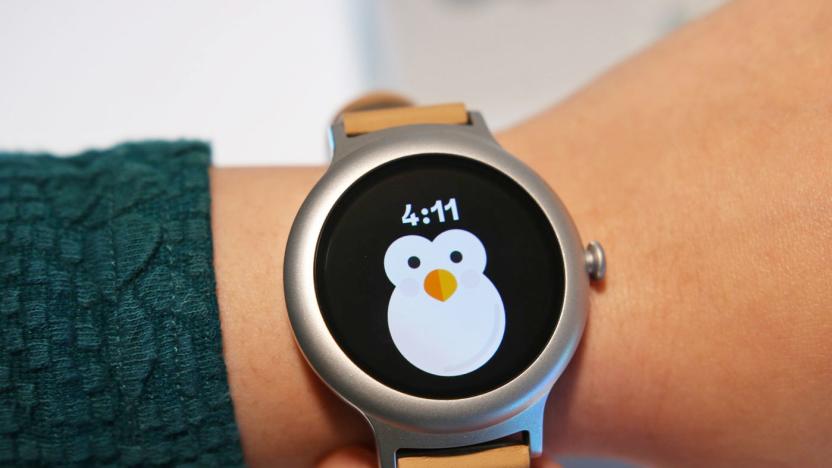
Bug delays Android Wear 2.0 yet again
Google's been talking about Android Wear 2.0 for a long time -- it was first announced almost a year ago, at the I/O 2016 developer event. But it was delayed from a planned fall launch until early 2017. And while a few watches have been released that include the new software (most notably the LG Watch Style and Sport), the release for older Android Wear devices has continued to be delayed. And you'll have to keep on waiting -- Google confirmed today that an unspecified bug was found during final testing that will push back the release again.
Nathan Ingraham03.30.2017
The Huawei Watch 2 is a strong showcase for Android Wear 2
Android Wear 2.0 recently made its debut on a pair of LG-made watches and, as expected, we're starting to see other companies show off devices of their own running the new operating system. At MWC this weekend, Huawei is unveiling its Watch 2, which combines the new Google OS with a sportier design. It will be available in the US in April, and in some European countries in March for €349 (about $350). After my brief time with the new timepiece, which is also available in a "Classic" design, I'm already impressed by how comfortably light and sturdy the two watches are.
Cherlynn Low02.26.2017